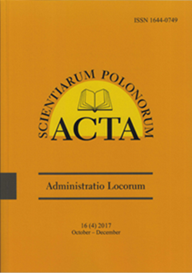REVITALIZATION OF URBAN SPACE – CASE STUDY OF GHENT, BELGIUM
REVITALIZATION OF URBAN SPACE – CASE STUDY OF GHENT, BELGIUM
Author(s): Jadwiga Biegańska , Stefania Środa-Murawska, Krzysztof Rogatka, Dominika Finc, Wojciech Kuczmowski, Mariusz Cielicki, Martin Werner, Michał Adam Kwiatkowski, Lilianna KopczyńskaSubject(s): Rural and urban sociology, Environmental interactions, Socio-Economic Research
Published by: Wydawnictwo Uniwersytetu Warmińsko-Mazurskiego w Olsztynie
Keywords: revitalization; dysfunctional areas; urban; Ghent; Belgium;
Summary/Abstract: Revitalisation is a natural consequence of social, economic and spatial transformations taking place around the world. This process seems to be particularly dynamic in Europe where it is a reaction to the appearance of degradation processes and negative socio-economic consequences related to them in the urban space. In the study, authors considered the urban revitalization as the case study of Ghent. Ghent, the second-largest city in the Flamish Region in Belgium after Antwerp (253,266 residents as at 2017) is among the first cities in Europe to have noticed the opportunities related to the correct planning of revitalization. The main source of data for this paper consists in an on-site query performed between August and September 2016. During the query, the researchers confronted information contained in the zoning plans with the facts, and carried out a questionnaire survey. Four different parts of Ghent implementing revitalisation projects were covered by the study, including The Sint-Pieters Station site, Brugse Poort, Oude Dokken, Dampoort.
Journal: Acta Scientiarum Polonorum Administratio Locorum
- Issue Year: 18/2019
- Issue No: 1
- Page Range: 33-47
- Page Count: 16
- Language: English

